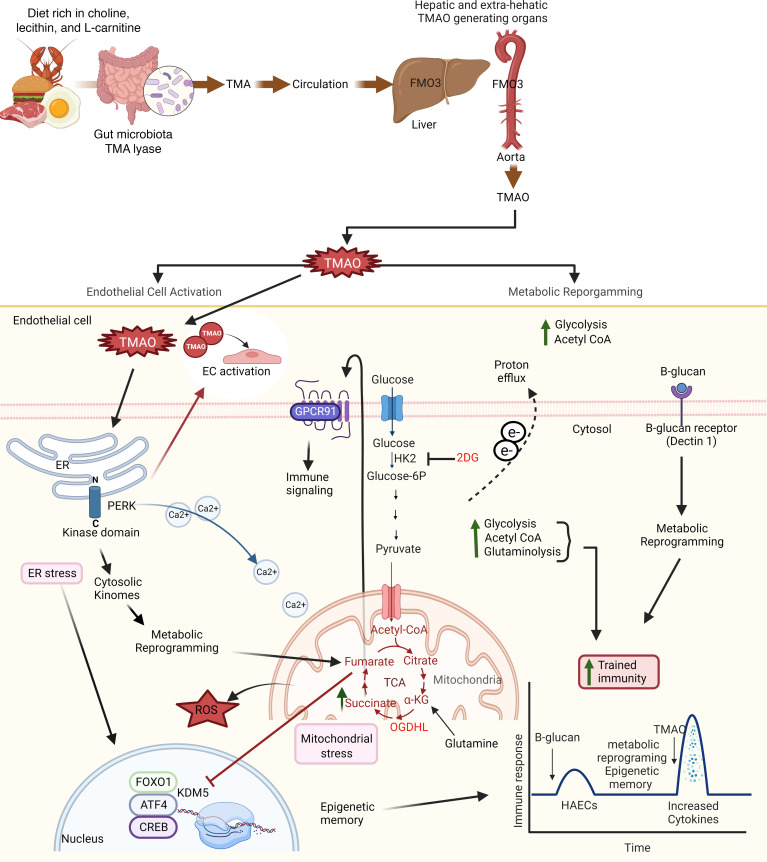Figure 11. Our working model.
Schematic figure showed that TMA is generated by gut microbiota from choline-, lecithin-, and L-carnitine protein–rich diet and is reabsorbed into blood circulation via the portal vein. Then, TMA goes to the liver and other organs, including the aorta, where it can be oxidized by FMO3 to generate TMAO. TMAO binds to the PERK receptor in the ER lumen. PERK connects ER stress in the lumen of ER via its cytosolic kinase domain to cytosolic kinome, CREB, FoxO1, and ATF4 to induce cytosolic stress, mitochondrial stress, and metabolic reprogramming, including increased glycolysis, acetyl-CoA generation, OGDHL-driven glutaminolysis, succinate accumulation, and fumarate accumulation, leading to OMA1-driven mitochondrial fragmentation and switches OXPHOS to glycolysis to establish trained immunity. Created with BioRender.com.

